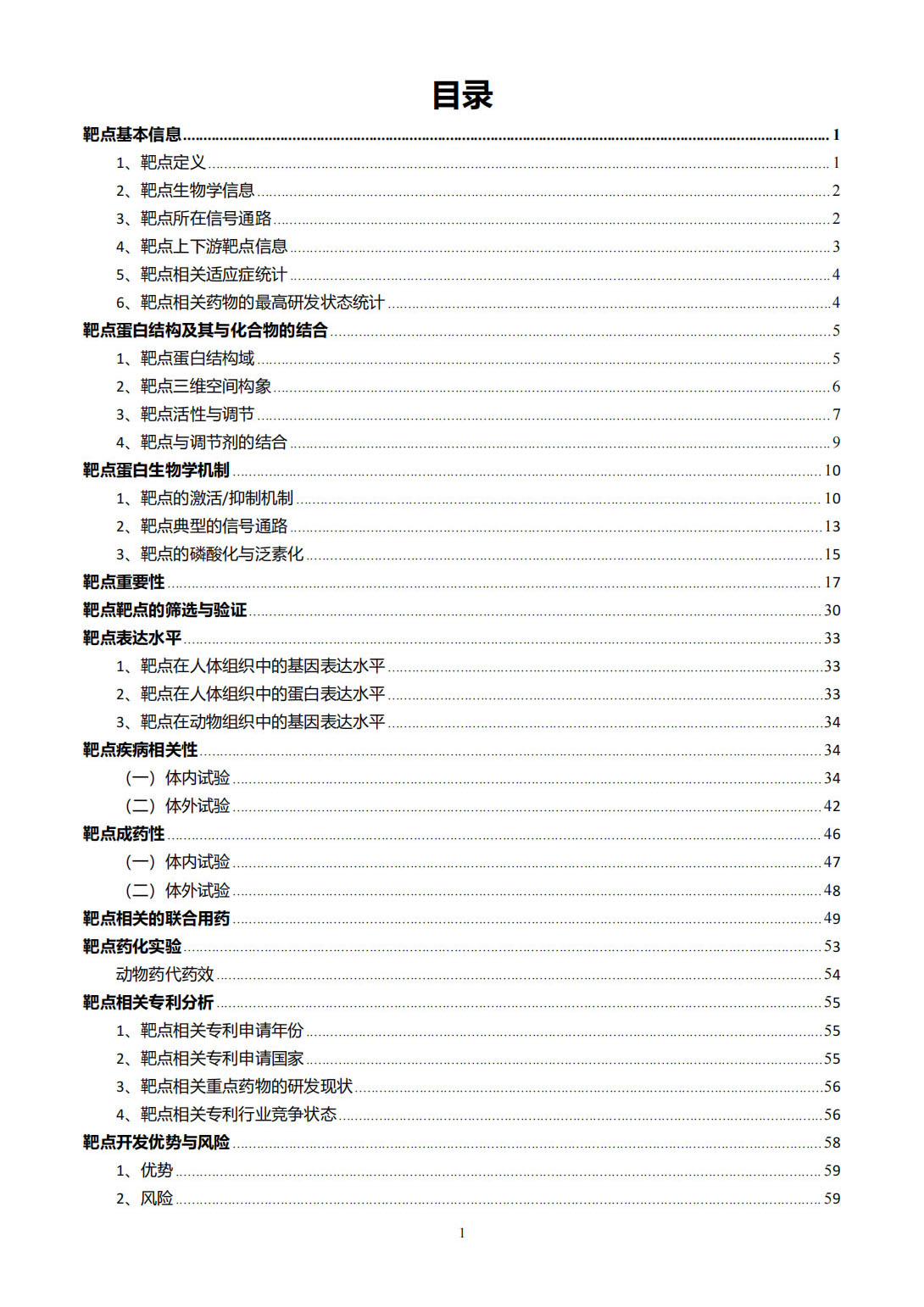RELA Target Analysis Report Summary


About the Target
Based on the provided context information, here are some key viewpoints regarding RELA (Synonymous keywords: RELA, p65) and its role in different cellular processes:
In cancer:
- NF-kappaB signaling, mediated by RELA and cREL subunits, plays a differential role in distinct types of cancer.
- Non-canonical NF-kappaB signaling is predominantly associated with hematological cancers.
- Solid cancers primarily exhibit canonical NF-kappaB signaling via RELA or cREL subunits.
- Telomerase can directly bind to RELA and regulate NF-kappaB-dependent gene expression critical for inflammation and cancer progression [1].
- RELA and cREL are involved in gene expression and proliferation in cancer cells [1].
In GBM (Glioblastoma multiforme):
- Low expression of RND3 leads to activation of NF-kappaB signaling and apoptosis resistance in GBM cells by affecting the interaction between RND3 and p65 [2].
- IMP3, a transcriptional target of p65, regulates the migration of glioma cells through positive feedback interaction with NF-kappaB pathway [3].
In apoptosis:
- Caspase-3 cleavage of p65 generates a fragment that selectively inhibits the transactivation of anti-apoptotic NF-kappaB target genes, shifting the cellular balance towards apoptosis [4].
In cellular adaptation to nitrosative stress:
- RELA-associated with ribosomes stimulates the synthesis of ppGpp in response to nitrosative stress, which inhibits translation and bacterial growth [5].
- ppGpp produced by RELA activates the transcription of branched-chain amino acid biosynthetic genes, aiding in the recovery of bacteria from nitrosative stress [5].
Please note that the viewpoints provided are based solely on the given context information and do not reflect any prior knowledge. The corresponding references for each viewpoint are indicated by the reference number in square brackets.
Based on the given context information, the following key viewpoints can be extracted regarding RELA (also known as p65) and its role in various cellular processes:
RELA activation and interaction: RELA plays a crucial role in activating the NF-kappaB pathway by directly interacting with TAK1, IKKs, and NF-kappaB p65 itself. This interaction promotes the occupancy of NF-kappaB p65 on promoters of target genes, including MUC1, and drives their transcription [6].
Chromatin regulation and splicing: Tethering RELA to specific exons, such as exon v10 of CD44, leads to its recruitment to chromatin and subsequent recruitment of DDX17. DDX17, in turn, modulates splicing efficiency and affects the inclusion rate of the targeted exon [7].
Checkpoint in apoptosis regulation: Under normal cellular conditions, PDK4 interacts with NF-kappaB/p65, sequestering p65 in the cytoplasm. However, knockdown of PDK4 disrupts the interaction and releases p65 to accelerate its nuclear translocation, potentially promoting TNF-mediated apoptosis [8].
Suppression of endothelial cell activation: Everolimus inhibits NF-kappaB p65 subunit translocation into cell nuclei, resulting in decreased expression of E-selectin and VCAM-1. This suppression of EC activation is mediated by altered mRNA levels and post-transcriptional regulation of miR-181b [9].
Regulation of gene expression specificity: The absence of p100 triggers a late response of RelB:p50 NF-kappaB activity, which induces the expression of genes involved in metabolic and cellular differentiation processes. This is in contrast to the transient activity of RelA:p50 heterodimers that mediate the expression of immune response genes upon TNF stimulation [10].
These viewpoints highlight RELA's role in NF-kappaB activation, chromatin regulation, cellular processes such as apoptosis and endothelial cell activation, and its interplay with other NF-kappaB subunits for gene expression specificity.
Based on the given context information, it is stated that the HTLV-1 and HTLV-2 regulatory proteins HBZ and APH-2 play a role in Tax-mediated NF-kappaB activation and TRAF3 interaction. Specifically, HBZ inhibits the action of p65 in the nucleus when Tax-1 is present, potentially competing with Tax-1. On the other hand, the recruitment of APH-2 in Tax-2-cytoplasmic complexes that contain TRAF3 restricts the translocation of p65 to the nucleus.
Based on this information, we can summarize the key viewpoints as follows:
HBZ and APH-2 are regulatory proteins associated with HTLV-1 and HTLV-2. [11]
HBZ has an inhibitory effect on p65 in the nucleus when Tax-1 is present. [11]
HBZ may compete with Tax-1 for its action on p65. [11]
APH-2, when recruited in Tax-2-cytoplasmic complexes containing TRAF3, limits the translocation of p65 to the nucleus. [11]
The interaction between APH-2 and TRAF3 is involved in this process. [11]
Please note that these summaries have been derived solely from the provided context information and are not based on prior knowledge. The reference [11] in the summaries denotes the source from which the information was extracted.
Figure [1]

Figure [2]

Figure [3]

Figure [4]

Figure [5]

Figure [6]

Figure [7]

Figure [8]

Figure [9]

Figure [10]

Figure [11]

Note: If you are interested in the full version of this target analysis report, or if you'd like to learn how our AI-powered BDE-Chem can design therapeutic molecules to interact with the RELA target at a cost 90% lower than traditional approaches, please feel free to contact us at BD@silexon.ai.
More Common Targets
ABCB1 | ABCG2 | ACE2 | AHR | AKT1 | ALK | AR | ATM | BAX | BCL2 | BCL2L1 | BECN1 | BRAF | BRCA1 | CAMP | CASP3 | CASP9 | CCL5 | CCND1 | CD274 | CD4 | CD8A | CDH1 | CDKN1A | CDKN2A | CREB1 | CXCL8 | CXCR4 | DNMT1 | EGF | EGFR | EP300 | ERBB2 | EREG | ESR1 | EZH2 | FN1 | FOXO3 | HDAC9 | HGF | HMGB1 | HSP90AA1 | HSPA4 | HSPA5 | IDO1 | IFNA1 | IGF1 | IGF1R | IL17A | IL6 | INS | JUN | KRAS | MAPK1 | MAPK14 | MAPK3 | MAPK8 | MAPT | MCL1 | MDM2 | MET | MMP9 | MTOR | MYC | NFE2L2 | NLRP3 | NOTCH1 | PARP1 | PCNA | PDCD1 | PLK1 | PRKAA1 | PRKAA2 | PTEN | PTGS2 | PTK2 | RELA | SIRT1 | SLTM | SMAD4 | SOD1 | SQSTM1 | SRC | STAT1 | STAT3 | STAT5A | TAK1 | TERT | TLR4 | TNF | TP53 | TXN | VEGFA | YAP1

